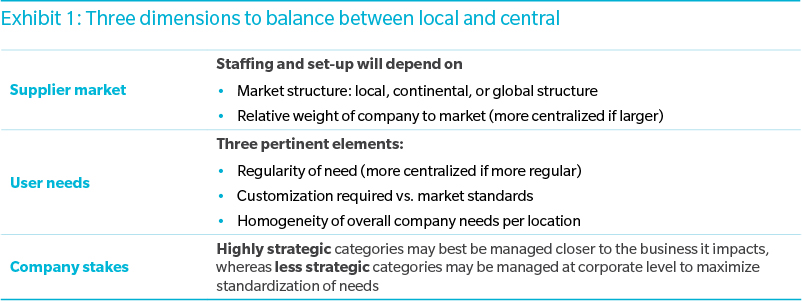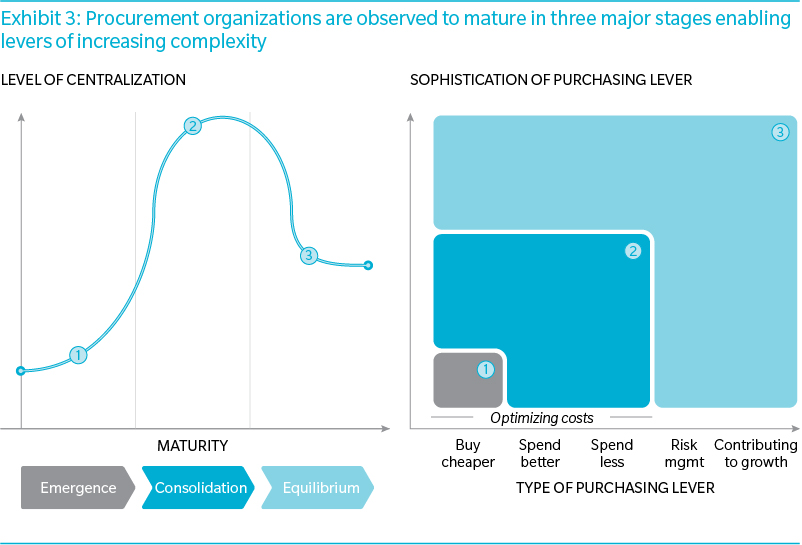The operating model of a procurement function needs to be consistent with a company’s overall strategy, global organization, and culture. It also needs to be aligned to its supplier market. Balancing internal and external pressures is a difficult task – and the target is often a moving one
The best organization will be the one that is adapted to your company’s DNA and strikes a balance between the constraints of the supplier market and the organization of key internal stakeholders.
Our latest Point of View discusses how to balance internal and external pressures and the evolution necessary for procurement organizations to reach a sophisticated equilibrium.
There are three key structural dimensions that drive the thinking on designing the Procurement operating model: supplier market, user needs, and stakes.

In reality, no organization can strike a perfect balance along these three dimensions. A choice must be made to focus on a given dimension depending on the company’s DNA, culture, organizational model, and overall level of maturity
Three Key Stages of Procurement Function Maturity

In our conversations with CPOs, we often hear the same questions: should my organization be centralized or more locally managed? The company is continuously evolving, how should I adapt the procurement organization? What is the right sizing of my organization? Should I consider outsourcing part of my organization?
Our latest Point of View dives deeper into these questions.





